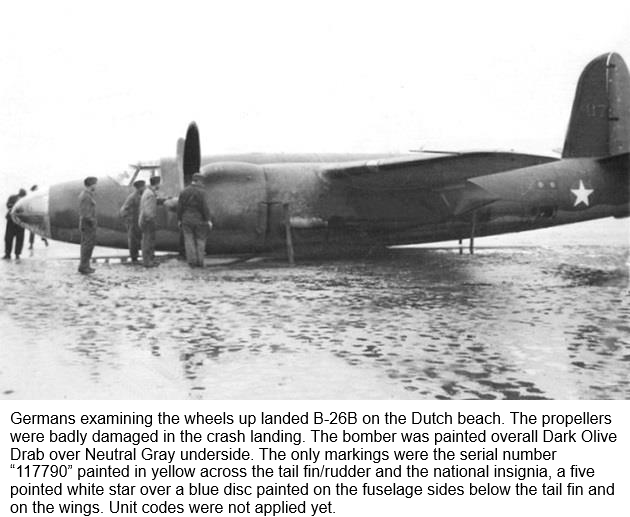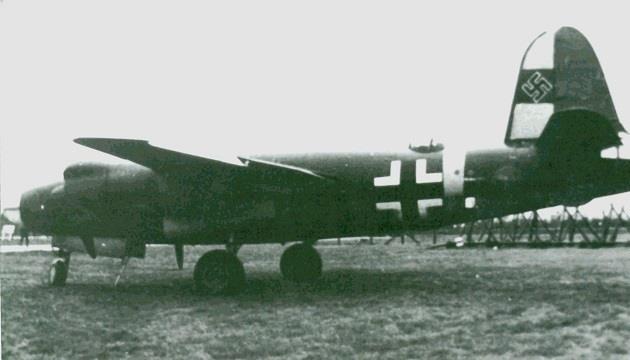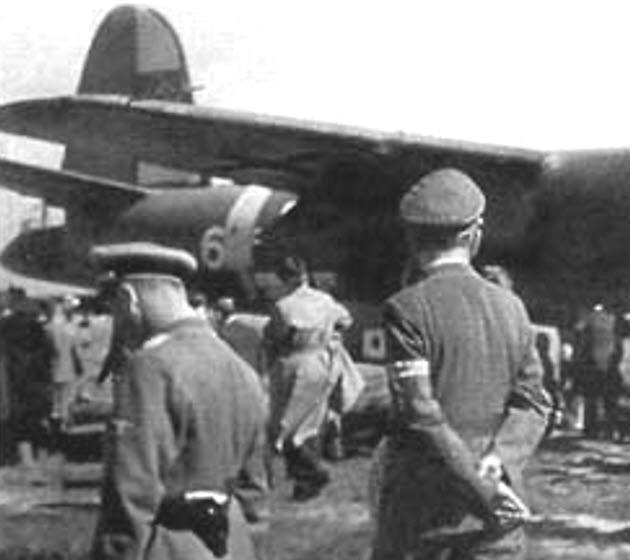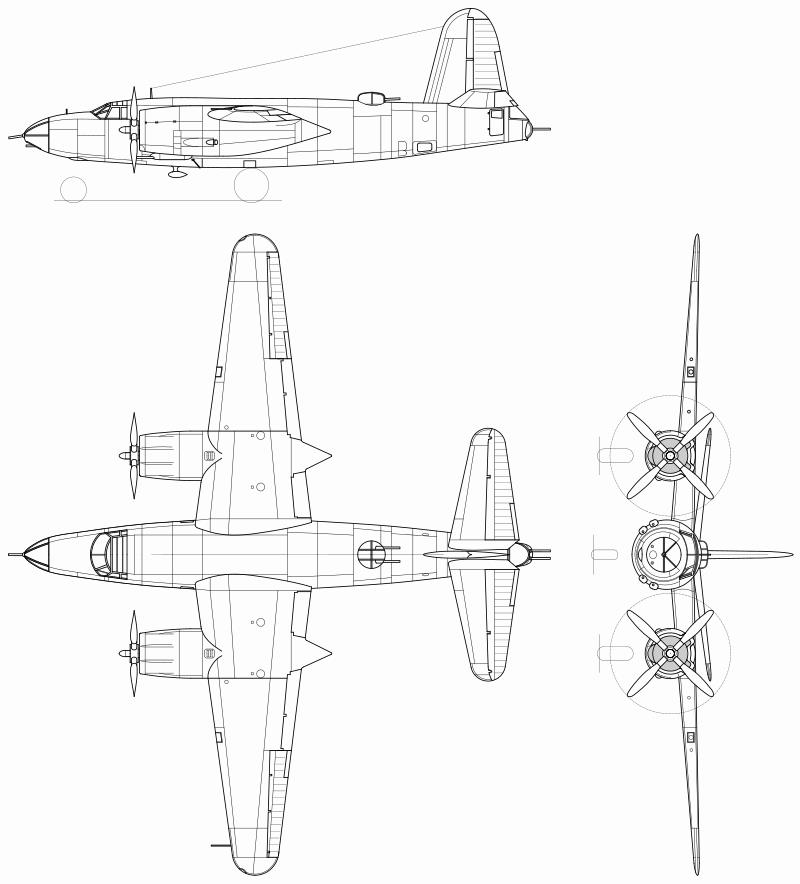| Type |
2 pilots, bombardier/radio operator, navigator/radio operator, 3 gunners. Medium bomber |
| Engine |
2 Pratt & Whitney R-2800-43 Driving Curtiss 4,11 m four-bladed propellers |
| Dimensions |
Length 17,75 m, height 6,55 m, span 21,64 m , wing area 61,13 m2, |
| Weights |
Empty 10896 kg, loaded 16798 kg , max. take off weight |
| Performance |
Max.. speed 434 km/h at sea level, 477 km/h at 4500 m , cruising speed , range , endurance , service ceiling , climb |
| Armament |
11 0.50-inch Colt-Browning machine guns. One in flexible nose position, four in blister packs on sides of fuselage, two in dorsal turret, two in tail turret, two in waist positions (one on each side of the fuselage aft of the turret). The internal bomb bay had maximum accommodation for two 2000-pound bombs or four 2000-pound bombs, the latter being carried in pairs one above each other on each side of the central catwalk. |
| Type |
Werk.Nr |
Registration |
History |
| B-26B |
41-17790 |
|
|





In March 1939, the United States Army Air Corps (USAAC) issued Circular Proposal 39-640, a specification for a twin-engined medium bomber with a maximum speed of 560 km/h, a range of 4,800 km, and a bomb load of 910 kg. On 5 July 1939, the Glenn L. Martin Company submitted its design, produced by a team led by Peyton M. Magruder, to meet the requirement, the Martin Model 179. Martin's design was evaluated as superior to the other proposals and was awarded a contract for 201 aircraft, to be designated B-26. The B-26 went from paper concept to an operational bomber in approximately two years. Additional orders for a further 930 B-26s followed in September 1940, still prior to the first flight of the type.
The B-26 was a shoulder-winged monoplane of all-metal construction, fitted with a tricycle landing gear. It had a streamlined, circular-section fuselage housing the crew, consisting of a bombardier in the nose, armed with a 7.62 mm machine gun, a pilot and co-pilot sitting side by side, with positions for the radio operator and navigator behind the pilots. A gunner manned a dorsal turret armed with two 12.7 mm machine guns (the first powered dorsal turret to be fitted to a U.S. bomber), and an additional 7.62 mm machine gun was fitted in the tail.
Two bomb bays were fitted midfuselage, capable of carrying 2,600 kg of bombs, although in practice such a bomb load reduced range too much, and the aft bomb bay was usually fitted with additional fuel tanks instead of bombs. The aircraft was powered by two Pratt & Whitney R-2800 Double Wasp radial engines in nacelles slung under the wing, driving four-bladed propellers. The engines were manufactured at the Ford Dearborn Engine plant in Dearborn, Michigan. The wings were of low aspect ratio and relatively small in area for an aircraft of its weight, giving the required high performance, but also resulting in a wing loading of 260 kg/m2 for the initial versions, which at the time was the highest of any aircraft accepted for service by the USAAC, until the introduction of the Boeing B-29 Superfortress, with the then-astonishing wing loading of 337.5 kg/m2
The first B-26, with Martin test pilot William K. "Ken" Ebel at the controls, flew on 25 November 1940 and was effectively the prototype. Deliveries to the USAAC began in February 1941 with the second aircraft, 40-1362. In March 1941, the USAAC started accelerated service testing of the B-26 at Patterson Field, near Dayton, Ohio.






